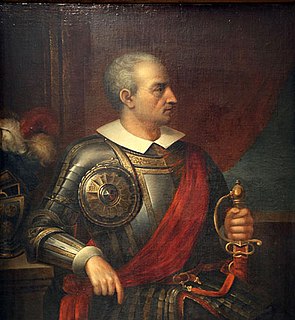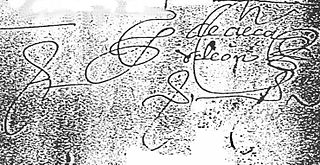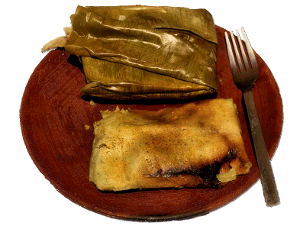
Gonzalo Pizarro y Alonso was a Spanish conquistador and younger paternal half-brother of Francisco Pizarro, the conqueror of the Inca Empire. Bastard son of Captain Gonzalo Pizarro y Rodríguez de Aguilar (senior) (1446–1522) who as colonel of infantry served in the Italian campaigns under Gonzalo Fernández de Córdoba, and in Navarre, with some distinction, and María Alonso, from Trujillo. He was the half brother of Francisco and Hernándo Pizarro and the full brother of Juan Pizarro.
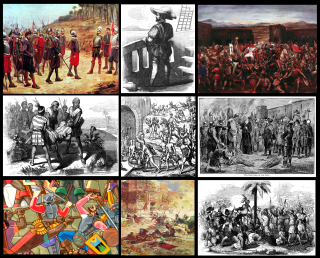
The Spanish conquest of the Inca Empire was one of the most important campaigns in the Spanish colonization of the Americas. After years of preliminary exploration and military skirmishes, 168 Spanish soldiers under conquistador Francisco Pizarro, his brothers, and their native allies captured the Sapa Inca Atahualpa in the 1532 Battle of Cajamarca. It was the first step in a long campaign that took decades of fighting but ended in Spanish victory in 1572 and colonization of the region as the Viceroyalty of Peru. The conquest of the Inca Empire, led to spin-off campaigns into present-day Chile and Colombia, as well as expeditions towards the Amazon Basin.

Manco Inca Yupanqui was the founder and monarch of the independent Neo-Inca State in Vilcabamba, although he was originally a puppet Inca Emperor installed by the Spaniards. He was also known as "Manco II" and "Manco Cápac II". He was one of the sons of Huayna Capac and a younger brother of Huascar.

Lunahuaná is a small town in the Cañete Province in Peru. The town lies about 187 km south of Lima in the Lunahuaná valley at the bank of Cañete River. Due to the unique landscape, Lunahuaná is a very popular destination for both Peruvians and foreign tourists. According to the 2017 census, there were 4,393 inhabitants.
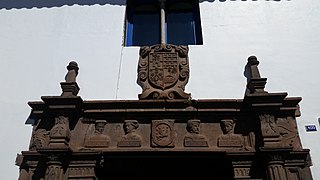
Hernando Pizarro y de Vargas was a Spanish conquistador and one of the Pizarro brothers who ruled over Peru. He ultimately died in Spain at a very advanced age, unlike his brothers who all suffered violent ends.
Diego de Almagro II called El Mozo, was the son of Spanish conquistador Diego de Almagro and a native Panamanian Indian.
San Miguel District is one of thirteen districts of the province San Miguel in Peru. San Miguel was founded by Francisco Pizarro in 1532 and is thus the oldest European town in Peru.

Illimo District is one of twelve districts of the province Lambayeque in Peru.

Calango District is one of sixteen districts of the province Cañete in Peru.
Chilca District is one of sixteen districts of the province Cañete in Peru.

Coayllo District is one of sixteen districts of the province Cañete in Peru.
Nuevo Imperial District is one of sixteen districts of the province Cañete in Peru.
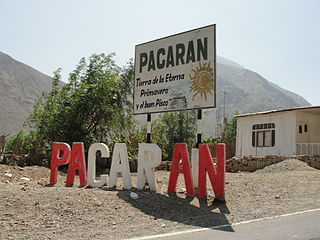
Pacarán District is one of sixteen districts of the province Cañete in Peru.
San Antonio District is one of sixteen districts of the province Cañete in Peru.
San Vicente de Cañete District is one of sixteen districts of Cañete Province in Peru.
Santa Cruz de Flores District is one of sixteen districts of the province Cañete in Peru.
Tomas District is one of thirty-three districts of the Yauyos Province in Peru.
The Battle of Ollantaytambo took place in January 1537, between the forces of Inca emperor Manco Inca and a Spanish expedition led by Hernando Pizarro during the Spanish conquest of Peru. A former ally of the Spaniards, Manco Inca rebelled in May 1536, and besieged a Spanish garrison in the city of Cusco. To end the stand-off, the besieged mounted a raid against the emperor's headquarters in the town of Ollantaytambo. The expedition, commanded by Hernando Pizarro, included 100 Spaniards and some 30,000 Indian auxiliaries against an Inca army more than 30,000 strong.





